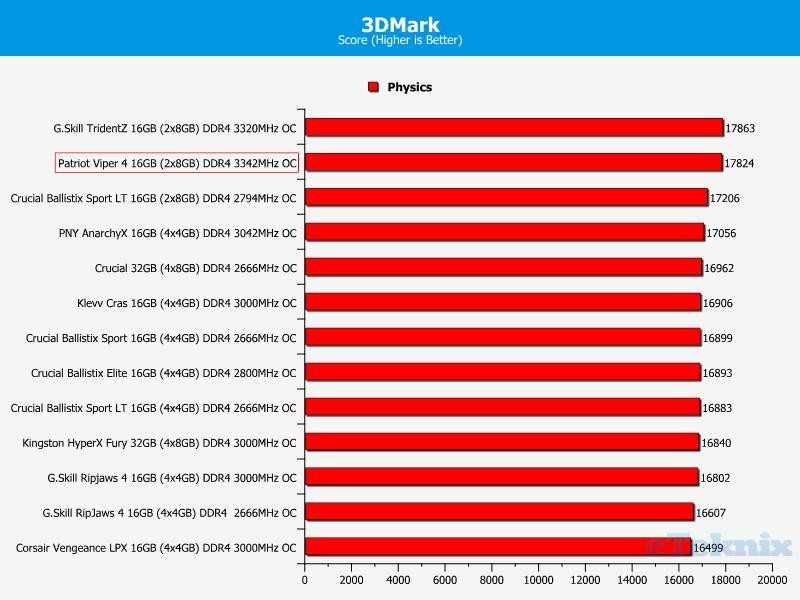Patriot Viper 4 DDR4 3200MHz 16GB (2x8GB) Review
John Williamson / 9 years ago
Performance Benchmarks
Cinebench
The memory kit’s stock performance in Cinebench is astonishing and a huge boost compared to other products on the market. It’s even surpassed the usual margin of error you would encounter and genuinely surprised me.
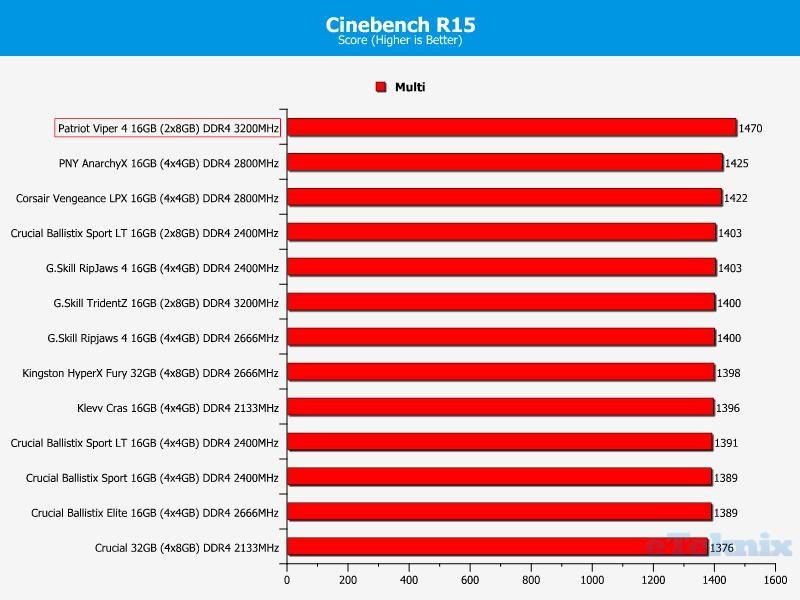
Once overclocked, the DIMMs achieved an identical score and almost reached the top position. At first, I was a little baffled by this notion, and ran the benchmark five times before taking an average figure. Each run was within 1% of the 1470 score, which means it’s completely accurate. Once again, you have to admire the memory’s ability to surpass the top-of-the-range G.Skill TridentZ in CPU tasks.
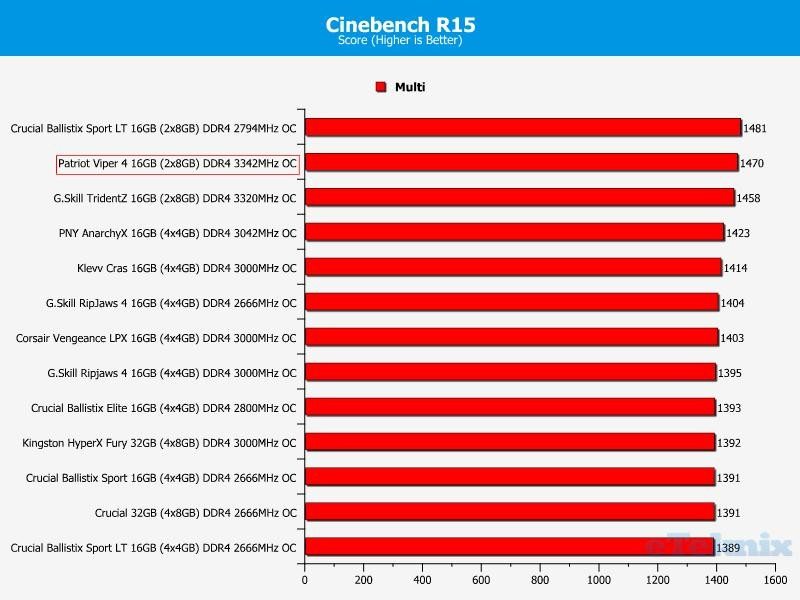
AIDA64
As expected, the product’s dual channel configuration has a noticeable impact on memory bandwidth, and showcases the importance of quad channel configurations on X99 systems. Nevertheless, the memory kit recorded impressive read and write numbers which once again beat its closest competitor. Unfortunately, copy speeds were disappointing but this might have been down to a weird software bug or background process.
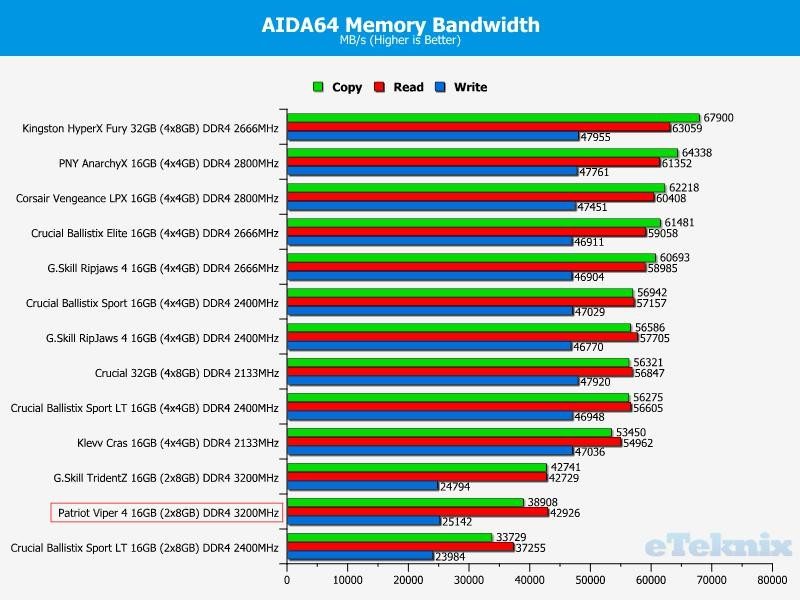
A similar pattern occurs during overclocked testing as once again, the memory manages excellent red and writes, but has some room for improvement in copy rates.
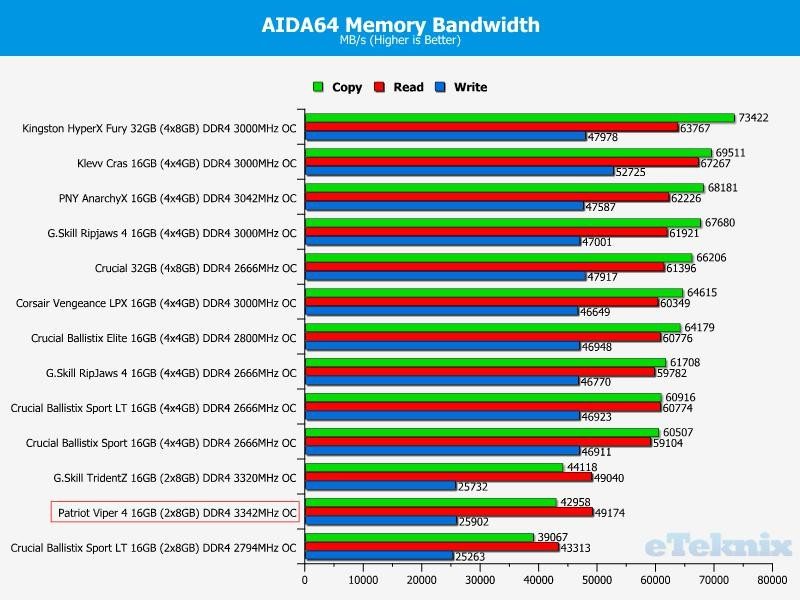
In terms of memory latency, the DIMMs scored extremely well with a rating of 63ns. This isn’t too far away from the G.Skill TridentZ despite being a more budget-friendly option.
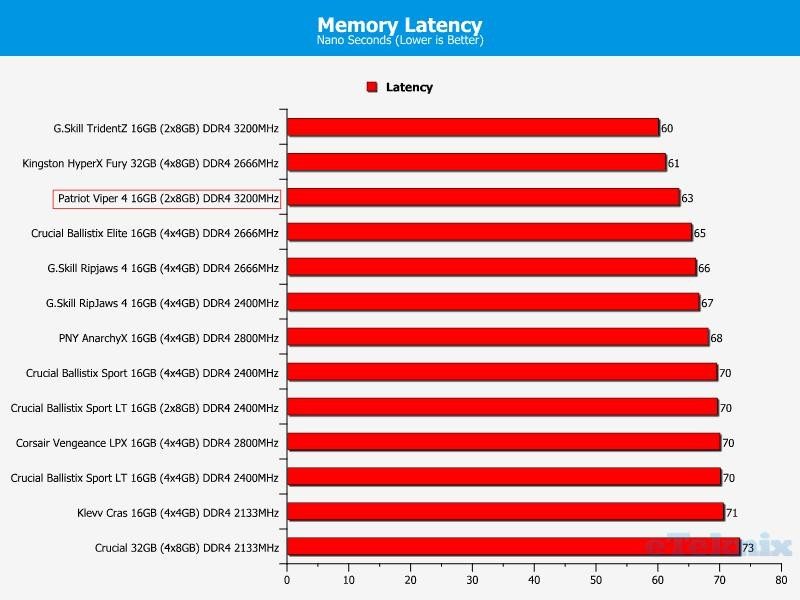
Overclocking the memory kit reduces the overall latency figure by 3 nano seconds. While it’s still behind the G.Skill TridentZ, the difference is quite small.
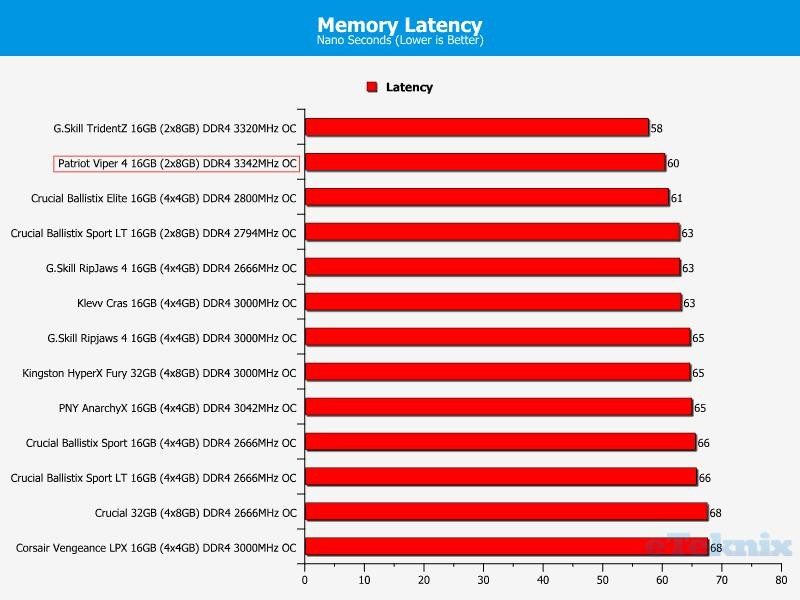
SiSoft Sandra
Rather surprisingly, there’s a marked difference between the Viper 4 and TridentZ in Sanda’s memory bandwidth benchmark. This is puzzling, but the numbers aren’t a million miles off and shouldn’t be a cause for concern.
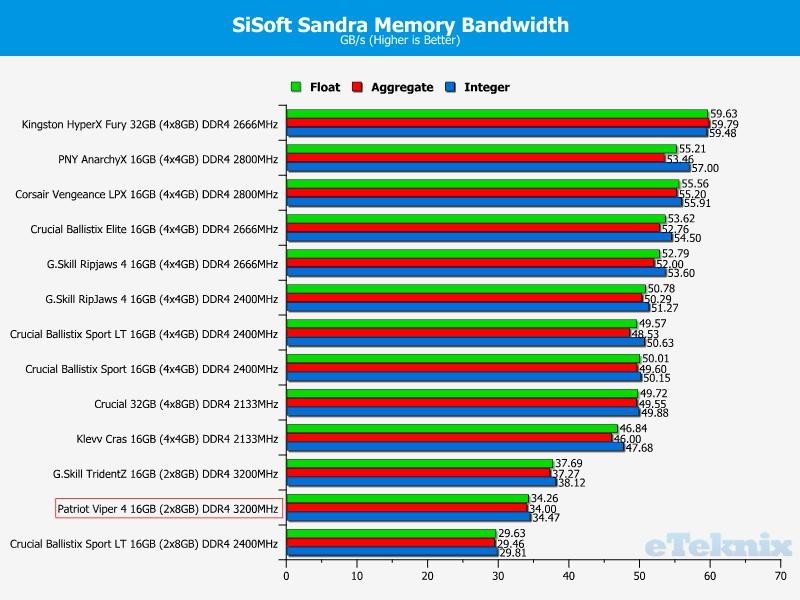
Although, once overclocked, the deficit is dramatically reduced and even allows the Viper 4 to attain a better Aggregate score.
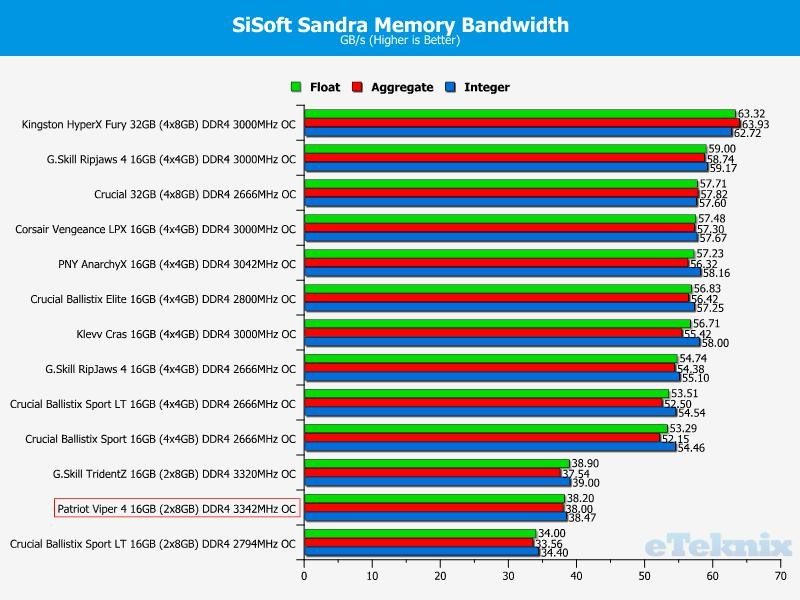
WPrime
The memory’s compute time is ridiculously quick and aided by the impressive stock frequency of 3200MHz.
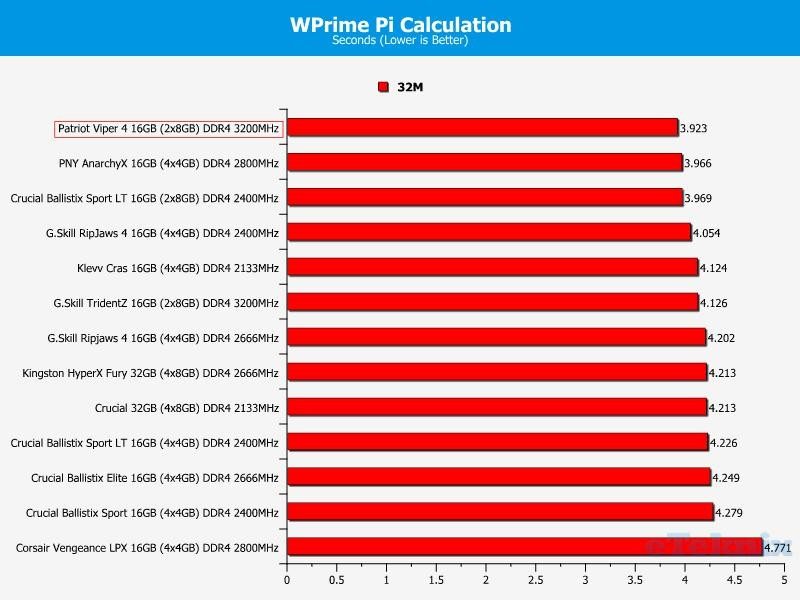
After running the benchmark with the overclock, there was a slightly longer Pi calculation time. The gap is tiny though and easily within a margin of error.
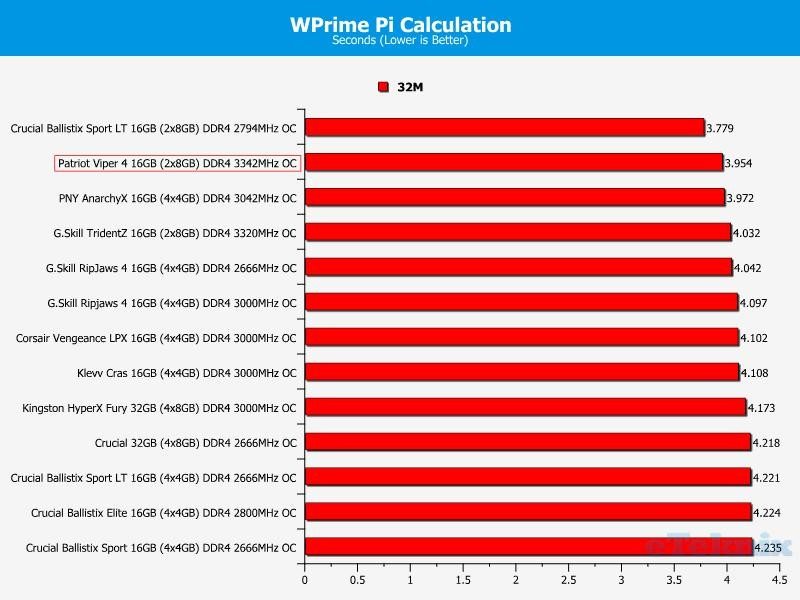
3DMark Fire Strike
3D performance numbers are usually bound by the graphics card’s capabilities but this doesn’t mean memory bandwidth isn’t a contributing factor. Here we can see, another top-notch score although the majority of this will be down to driver improvements from NVIDIA.
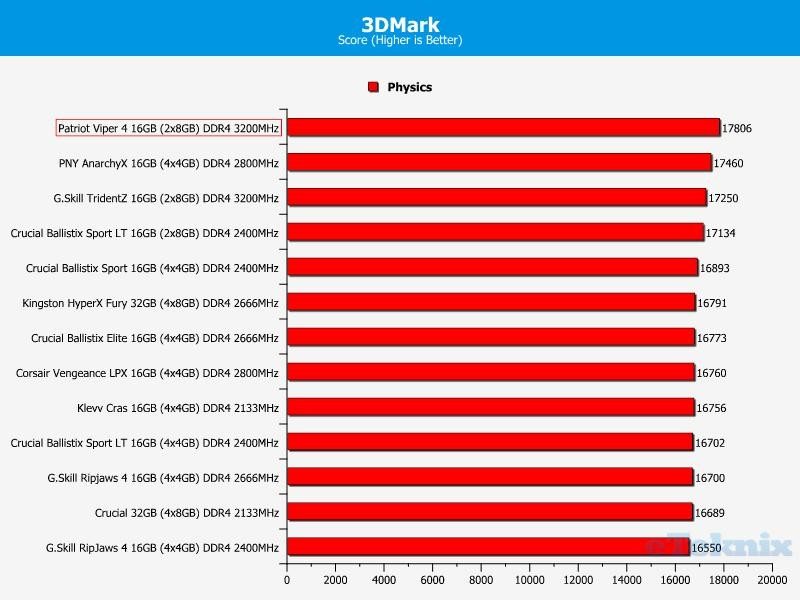
The overclocked results are equally as impressive and progressively edging towards 17890.
